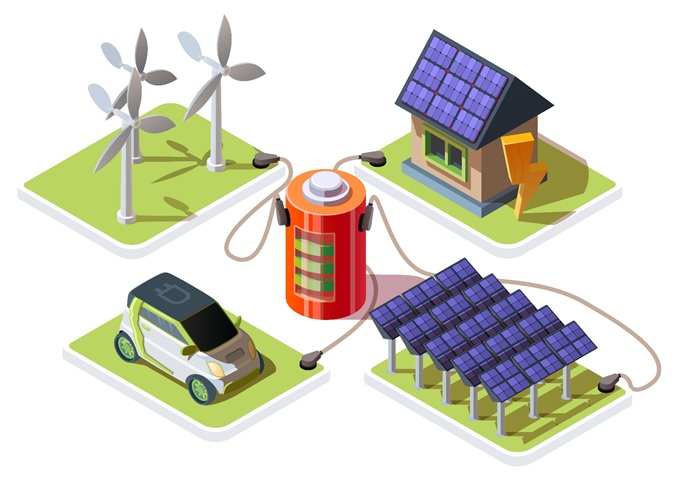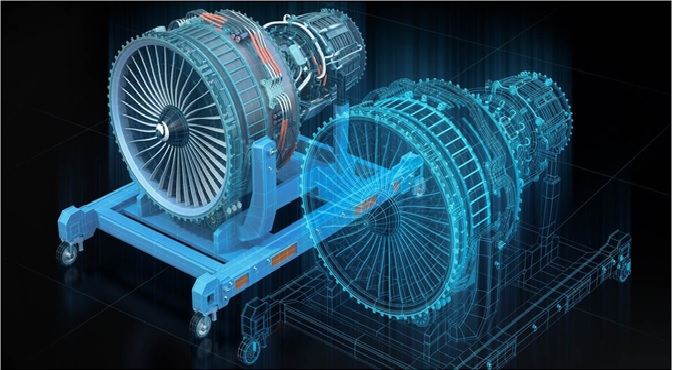Energy Harvesting
Energy harvesting is the process of capturing and converting ambient energy from the environment into usable electrical power. This process typically involves using a device, such as a transducer or sensor, to collect energy from sources such as sunlight, heat, vibration, or electromagnetic radiation.

Figure 1. Energy Harvesting
Figure 1 shows how energy harvesting is done. There are many different types of energy harvesting technologies based on the type of energy source. However, all energy harvesting systems, in their simplest form, consist of three main components, in addition to a source of energy:
- Transducer/Harvester: This is the part of the system that converts the ambient energy from the source into electrical energy. [1]
- Interface Circuit: The interface circuit extracts the maximum possible amount of energy from the transducer and makes the energy suitable for use by conditioning it into a suitable form for the desired application (through voltage rectification, voltage regulation, etc). [1]
- Load: The load is the part of the system that could either include electronic devices that consume the harvested energy (such as chips, circuits, actuators, sensors, etc.) or energy storage components such as capacitors, super-capacitors, etc. [1]
There are several types of energy harvesting, including:
- Solar Energy Harvesting: This type of energy harvesting uses photovoltaic cells to convert sunlight into electrical energy. It is commonly used in applications such as portable electronic devices, outdoor lighting, and remote sensors.
- Thermal Energy Harvesting: This type of energy harvesting uses thermoelectric generators (TEGs) to convert heat into electrical energy. It is commonly used in industrial applications, such as powering sensors on pipes and turbines.
- Vibration Energy Harvesting: This type of energy harvesting uses piezoelectric materials to convert mechanical vibration into electrical energy. It is commonly used in wireless sensors and other low-power applications.
- RF Energy Harvesting: This type of energy harvesting uses antennas to capture energy from radio waves, such as those emitted by wireless networks and cell phones. It is commonly used for low-power wireless devices, such as sensors and RFID tags.
- Hydro Energy Harvesting: This type of energy harvesting uses the movement of water to generate electrical power. It is commonly used in applications such as small-scale hydropower plants, water turbines, and wave energy converters.
- Wind Energy Harvesting: This type of energy harvesting uses wind turbines to generate electrical power. It is commonly used in large-scale wind farms to generate electricity for the grid.
There are several technologies used for energy harvesting, including:
- Solar: Solar energy harvesting uses photovoltaic (PV) cells to convert sunlight into electrical power. This technology is commonly used for portable electronic devices, such as smartphones and wearables.
- Thermal: Thermal energy harvesting uses thermoelectric generators (TEGs) to convert heat into electrical power. This technology is commonly used in industrial applications, such as to power sensors on pipes and turbines.
- Vibration: Vibration energy harvesting uses piezoelectric materials to convert mechanical vibration into electrical power. This technology is commonly used in wireless sensors and other low-power applications.
- Radio Frequency (RF): RF energy harvesting uses antennas to capture energy from radio waves, such as those emitted by wireless networks and cell phones. This technology is commonly used for low-power wireless devices, such as sensors and RFID tags.
Energy harvesting has several advantages over traditional battery-powered devices, including increased efficiency, reduced maintenance, and lower environmental impact. As the technology continues to improve, it is likely that energy harvesting will become increasingly common in a wide range of applications, from consumer electronics to industrial automation.
References:
- https://www.onio.com/article/what-is-energy-harvesting.html
Cite this article:
Hana M (2023), Energy Harvesting, AnaTechMaz, pp.200















